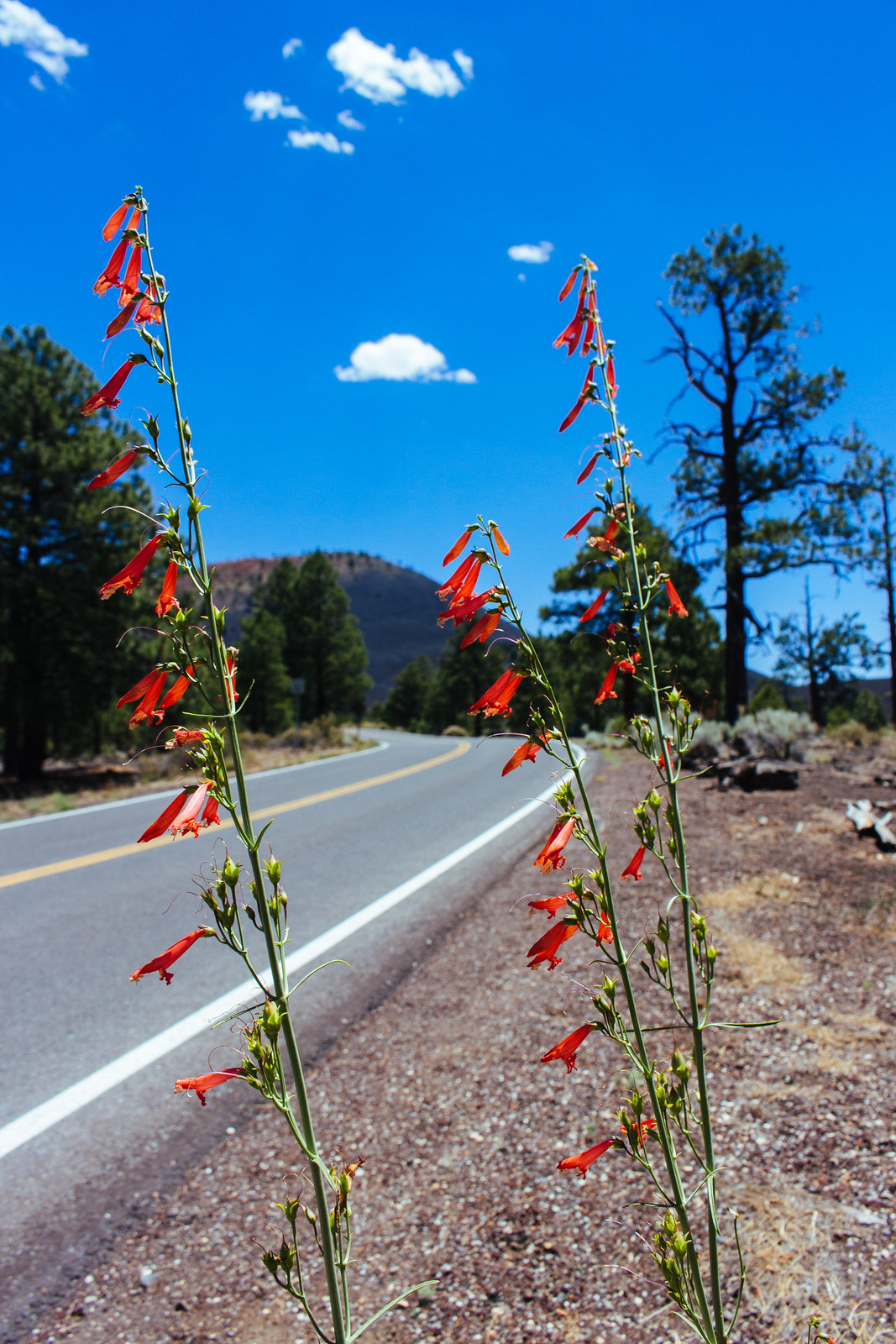Photo Post: Sunset Crater Volcano National Monument in Flagstaff, Arizona

|
| Sunset Crater Volcano |
As I drive south from Wupatki National Monument, junipers begin to replace the sparse scrubland of the high desert north of Flagstaff, Arizona. But it’s not long before the juniper woodland gives way to hardened lava, rolling hills, and ponderosa pines.

|
| Lava flow |
I search for the namesake peak of Sunset Crater Volcano National Monument between the pine branches as I drive around one hillside to another, and then—there it is: a clean, Platonic-ideal-form cinder volcano with a ruddy, “sunset” gradient from red to gray on its side.
I’m momentarily distracted as a striking Steller’s Jay flies by, its own blue-and-ashy-gray feathers painted the complete opposite of Sunset Crater’s gradient.

|
| Ponderosa pine |
A little further down the road, I walk out onto some rough, hardened beds of lava that dried only 900 years ago. I quake in fear like the aspen trees growing on the remains of the youngest eruption in the San Francisco volcanic field.

|
| Looking out onto the desert |
But as I feel the crumbly, ashy soil beneath my feet, I remember its moisture-keeping properties made it possible for the prehistoric Sinagua people, who lived just north of here, to build the multi-story ruins of Wupatki not long after Sunset Crater’s very recent eruption.

|
| Roadside penstemon |
How to get there
Sunset Crater Volcano National Monument is right outside of Flagstaff, Arizona. Budget 20 minutes to drive from downtown Flagstaff north along U.S. Route 89 to the park’s entrance, tucked inside Coconino National Forest.Alternatively, visit Wupatki National Monument to the north first and then stay on the park’s loop road south and west through the forest to reach Sunset Crater.